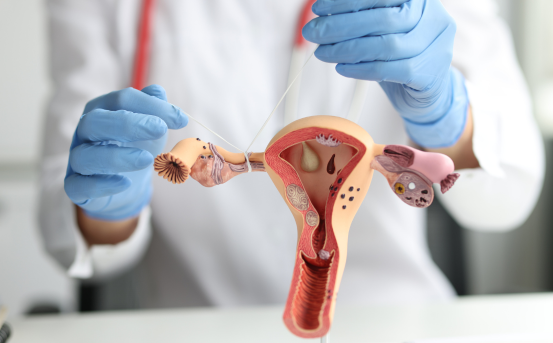Tubal ligation reversal surgery is meant to be a permanent form of contraception, medical advancements have made it possible to restore fertility in select cases. Tubal ligation reversal is a surgical procedure designed to reconnect the fallopian tubes, allowing eggs to travel from the ovaries to the uterus once again. This offers hope to women who once believed they had permanently closed the door to having more children.
Choosing permanent birth control like tubal ligation is a deeply personal decision, often made when a woman feels her family is complete. But life has a way of changing. New relationships, a change of heart, or the loss of a child can shift perspectives and reignite the desire to conceive again. For women in such situations, tubal ligation reversal surgery offers a potential path to natural pregnancy after sterilization.
What is Tubal Ligation?
Tubal ligation is a surgical procedure where a woman’s fallopian tubes are cut, tied, or sealed to permanently prevent pregnancy. It blocks the egg’s path from the ovaries to the uterus and prevents sperm from reaching the egg. It’s one of the most effective methods of permanent contraception.
However, some women may later decide they want to have children again. This could be due to remarriage, a loss, or a change in life plans. That’s where tubal ligation reversal comes in.
What is Tubal Ligation Reversal Surgery?
Tubal ligation reversal is a surgical procedure aimed at restoring fertility by reconnecting the fallopian tubes that were previously cut or blocked. The goal is to allow eggs to move through the fallopian tubes so that natural conception becomes possible again.
This procedure is also known as :-
-
Tubal reversal
-
Tubal reanastomosis
-
Microsurgical tubal reanastomosis
It is a delicate and precise operation typically performed using microsurgery, either through a small abdominal incision (mini-laparotomy) or laparoscopic techniques.
Who is a Candidate for Tubal Reversal Surgery?
Not every woman who has had tubal ligation is a candidate for reversal surgery. The success of the procedure depends on several factors :-
Type of Tubal Ligation Performed
The type of procedure initially used plays a big role. Women whose tubes were clipped or tied with minimal damage have better chances than those who had a large portion of the tubes removed or burned (cauterized).
Length of Remaining Fallopian Tubes
Surgeons need at least 4 cm of healthy tube remaining on each side for a successful reversal.
Age of the Woman
Age affects fertility. Women under 35 usually have higher chances of conceiving post-reversal compared to women over 40.
Overall Fertility Health
Other factors like ovulation regularity, partner’s sperm health, and uterine condition also play a role.
How is Tubal Ligation Reversal Performed?
Tubal reversal is a specialized surgery that usually takes 2–3 hours and requires general anesthesia. Here’s a step-by-step overview :-
Preparation
The patient undergoes preoperative evaluation, including blood tests, imaging, and fertility assessment.
Surgical Approach
There are two main approaches :-
-
Mini-laparotomy :- A small incision is made in the lower abdomen.
-
Laparoscopic (or robotic-assisted) :- Minimally invasive with faster recovery.
Microsurgical Repair
Using a microscope or magnifying lenses, the surgeon carefully removes the blocked or damaged parts and reconnects the healthy segments of the fallopian tubes using tiny, delicate sutures.
Postoperative Testing
Dye is passed through the tubes (tubal patency test) to ensure they are open and functioning.
Risks and Complications of Tubal Reversal
While tubal ligation reversal is generally safe, like all surgeries, it carries some risks :-
Common Risks :-
-
Bleeding
-
Infection
-
Pain or scarring
-
Anesthesia-related complications
Specific Risks :-
-
Ectopic Pregnancy :- A serious condition where the embryo implants in the fallopian tube. This occurs in about 5–10% of cases post-reversal.
-
Surgical Failure :- Tubes may not remain open after surgery or may scar shut.
It’s crucial to choose a highly skilled and experienced surgeon to minimize complications.
Recovery After Tubal Ligation Reversal
Hospital Stay :-
Most patients go home the same day or after a short hospital stay.
Recovery Timeline :-
-
First 2–3 days :- Pain, mild discomfort, rest is essential.
-
Week 1 :- Return to light activities.
-
After 2 weeks :- Resume normal routine, but avoid strenuous activities.
-
Sexual Activity :- Usually allowed after 2–3 weeks.
Full healing may take 4–6 weeks. Your doctor will monitor recovery and may recommend a fertility tracking plan.
Alternatives to Tubal Ligation Reversal
If reversal is not an option due to medical reasons or tube damage, other fertility options are available :-
In Vitro Fertilization (IVF)
Eggs are fertilized outside the body, and the embryo is implanted directly into the uterus. IVF bypasses the fallopian tubes entirely.
Donor Egg IVF
For older women or those with poor egg quality.
Adoption
For those who are open to parenting without biological pregnancy.
While IVF is often more expensive long-term, it may be more suitable in certain cases.
Conclusion
Tubal ligation reversal surgery offers a second chance at natural conception for women who’ve previously undergone sterilization. With high success rates in the right candidates, this procedure is a beacon of hope for many. However, it’s not the right choice for everyone. A detailed fertility evaluation and consultation with an experienced reproductive surgeon are essential before making a decision.























